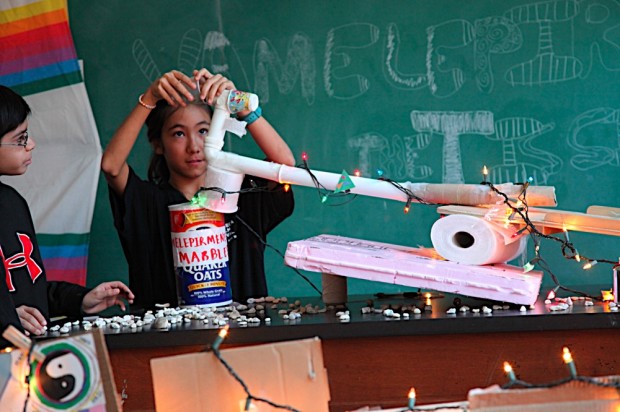
By Nathan Maton
What do games have anything to do with learning? We spoke to nationally recognized researchers, teachers, game-based schools and companies that develop educational games and asked how they see games fitting into the education landscape.
IT'S ABOUT INTERACTION, NOT ISOLATION. “At the end of the day, a game is successful only if each individual gamer has an interaction with it that makes him or her want to come back for more,” says Nt Etuk, CEO of Dimension U, an educational games company. “Even the massively multi-player games [such as World of Warcaft] are successful only because they have tapped into a million individual need to interact, or to compete, or to form groups.”
GAMES CAN HELP STRUGGLING STUDENTS. “[Games] don't cause behavior problems but eliminate them,” Ananth Pai says. Pai teaches students from second to fifth grade in Parkview/Center Point Elementary school in Maplewood, Minnesota. Pai took the time to develop a game-based curricula, and says he's seen the rewards of his efforts.
In his gamified classroom, students who performed below proficiency contributed the most to the double-digit growth in achievement. "These are the students that make up the whole education reform debate. Gamification helps them from falling through the ever widening achievement gap as they move forward from third grade,” he said.
IT'S HIGHLY PERSONALIZED. With the best games, the player is challenged at exactly the right level and in the right way to keep the player playing. “Maybe the question we need to ask is what about games causes youth to engage that our traditional approach to education lacks,” says Brian Alspach, Executive Vice President of E-Line Media, an educational games publisher well known for their game Gamestar Mechanic. “Perhaps applying games to classes is hard because they work on a different educational philosophy than our current education system. Classes are designed to get the lowest common denominator engaged, while games are an interactive, 'lean-forward' medium in which players can progress at their own pace while trying and failing in a safe environment. A well-designed game offers an intricate balance of challenges and rewards that continually pushes players to, and then beyond, the limits of their knowledge and skill.”

